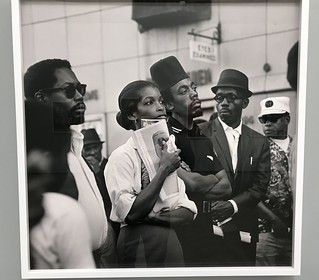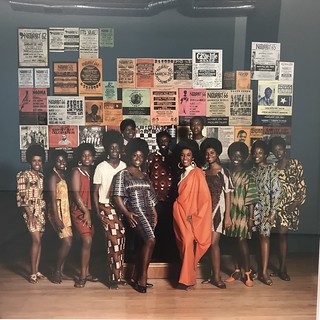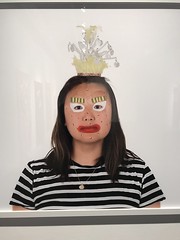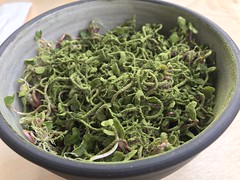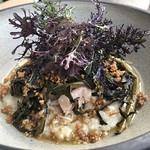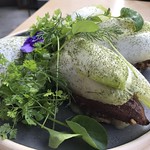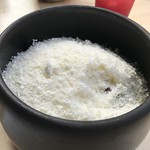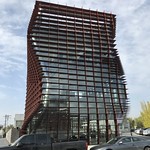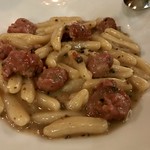Often it works well to see the movie first and then read the book, as a book has scope to describe so much more, especially what’s going on inside people’s heads. Boy Erased was absolutely such a book. I really enjoyed the film, but I also left with some unsatisfied curiosity about his internal journey of self-understanding. The film showed us what it was like to suffer through the fraudulent travesty that is “ex-gay ministry”. The book filled in more, not only of that experience, but of what it was like to grow up a boy in a close faith community, and by coming out as gay, lose not only his community but his faith. His account was impressionistic, not strictly following a timeline, but a chain of memories and reflections in a stream of consciousness. It was an emotionally faithful way to convey the sense of someone whose life picture was shattered, and he’s picking up the pieces and trying to make sense of how they might fit together again. Many of these memories he’s undoubtedly replayed countless times in his head, sometimes reinterpreting old things in new ways. I’m glad he had the integrity to get through it and tell this remarkable story.
Monday, January 28, 2019
Saturday, January 26, 2019
FILM: BlacKkKlansman
BlacKkKlansman is the horrifying and riveting story of audacious rookie cop Ron Stallworth, the first black cop in the Colorado Springs Police Department in the 1970s, and his stunning infiltration of the Klu Klux Klan, with the help of a Jewish partner. The film is all the more impactful for being, as the film itself declares in an opening title, “based on some fo’ real, fo’ real shit.” The story initially touches on his challenges being the first black cop in the police department, and being assigned to go under cover at black nationalist rallies. The film nicely captures the 1970s era and its racial dynamics. Though the film has a period feel, the dynamics are uncomfortably familiar. Stallworth’s “double consciousness” about being a black cop becomes even more fraught when he starts dating the president of the local college black students organization. But the film really gets intense when Stallworth starts to infiltrate the KKK, posing on the phone as a racist who wants to join them, but forgetting to use an alias instead of his real name. When the local Klansmen want to meet him in person, he has to recruit a colleague to pose as the “white racist Ron Stallworth”. The two “Ron Stallworths” work hard to keep their stories straight, but the wheels come dangerously close to coming off the rails. It doesn’t help that the white colleague also happens to be Jewish, and if the KKK hate anyone as much as the blacks, it’s the Jews. When the grand wizard David Duke himself (uncannily portrayed by Topher Grace) comes into town to preside over Ron’s Klan initiation ceremony at the same time as the black student organization is hosting a revered civil rights icon (and creating a tempting terrorism target for the Klansmen), the intensity and suspense in this film go to 11. Here director Spike Lee has created a masterful extended sequence of the two mindbogglingly concurrent but dissonant scenes – the Klan ceremony and the civil rights leader’s speech – sometimes cutting back and forth and sometimes showing both split-screen. It fires on multiple levels at once, with the dissonance of the two diametric views of national justice compounding on the double procedural suspense of the terror plot and the undercover operation ready to unravel at any moment. I was breathless. The denouement is equally brilliant, managing to be both profoundly satisfying and provocatively jarring. Just when you might be tempted to feel a comfortable distance from another era when times were different, Spike Lee throws ice cold water in your face, saying “that was then, but that is also now.”
Saturday, January 19, 2019
FILM: Green Book
Saturday, January 12, 2019
FILM: On The Basis Of Sex
Not one but two films this year illustrate what a fascinating and dramatic life Ruth Bader Ginsberg has lived. In June, we loved RBG the documentary, but last night we really enjoyed On The Basis Of Sex, a dramatization of formative episodes in her early years. The film begins with a great shot of a sea of young white men in dark suits striding into Harvard Law School, and then amidst them, one woman in a blue dress. We get to see young Ruth in law school, and what it was like being one of a handful of women in one of the first years women were admitted at all. Including a scene where the dean of the law school asks her to explain why she chose to go to law school and take up a spot that could have been given to a man! We heard some of these same stories in the documentary, but it’s something else to see them dramatized. We see her own experiences of sex discrimination challenges and indignities in her own early job search, her being a law professor at Rutgers teaching progressive young students in the 1960s, and then her first case with the ACLU that was the genesis of her later amazing career in a string of cases challenging gender discrimination. But the heart of the film is the whole family dimension, the amazing way that she and her husband Marty supported each other, and their relationship with their growing daughter and son, for whom Ruth and Marty wanted to set a great example as well as make a better world. While the climax is a dramatic courtroom procedural, strong in its own right, it gains even more emotional heft from the family and love story behind it.
Friday, January 11, 2019
ART: La Cienega Gallery Crawl: Kwame Brathwaite, Dana Weiser, Farrah Karapetian
There’s a stretch of La Cienega Blvd, just south of the 10 but above Washington, lined with single-story brick buildings lacking windows, a light industrial look that wouldn’t draw attention. But a closer look and it turns out that many of those are small private art galleries, and this is a whole art district, its non-descript walls concealing a great variety of creative work just waiting to reward those who venture in. I’d driven past it countless times, but the KCRW Art Talk podcast urged me to check it out. I was glad I did.
The first gallery I’d ventured into was Philip Martin, featuring an exhibit called “Kwame Brathwaite: Celebrity & Everyday”. This retrospective looks at the early part of the American photographer’s career in the 1960s and 70s when he came to prominence organizing pageants of exclusively black models, and popularizing the phrase “black is beautiful”. The show included a good selection of works representing his photos of celebrities, of models, and of Harlem street life. The model photos are full of beautiful African-American women posing in 1960s African-inspired fashions, proudly claiming their natural beauty and heritage. Many of the celebrity photos, in contrast, are unposed and unstaged, catching candid and sometimes even vulnerable moments. He catches a surprisingly vulnerable glimpse of Muhammad Ali in a boxing ring. James Brown is on stage, with the light in the photo catching him in a moment of soulful expression, a synesthetic image that almost makes you hear the note he is singing. At Garvey Day parades in Harlem, Brathwaite’s eye is more on the crowd than on the parade itself, catching fascinating arrays of spectators and just people on the street, and conveying a mood, the feel of the street.
Just up the street, Walter Maciel Gallery was showing “If There Were Tigers” by Dana Weiser. The work shows a young artist who has thought deeply about her identity, as well she might, being ethnically Korean but adopted by a white family in Minnesota. In a series of works, she has taken traditional Korean hanbok dress material and traditional Korean folk art patterns of embroidery, but infused it with themes and objects from her American life. Some may appear as a traditional still life at first glance, but then you notice the speaker, the sunglasses, or the toy helicopter. They are thoughtful and playful at the same time. One captivating piece called “Mystical Lineage” contemplates unknown ancestors as traditional costumes worn by invisible bodies. Another more provocative series are self-portraits entitled “Enacting My Koreanness”, in which she recreates some traditional masks in make-up on her own face, very expressive about perceived expectations. (I couldn’t help but think about Margaret Cho’s bit about Asian chicken salad.)
Across the street at Von Lintel Gallery, Farrah Karapetian’s “Collective Memory” installation evoked her memories of LA’s last lesbian bar, the recently closed Oxwood Inn. This immersive show not only included highly rendered photography, photograms, and works incorporating text, but also a glass pool table, a glass brick wall, and recreated parts of a bar and a restroom. The glass brick wall had some graffiti on it, and black sharpies nearby invited the gallery viewer to add to the art. (With some active encouragement from the gallery staff, I added my own bit of graffiti.) Red neon lighting enhanced the sense of place being created. This gallery turned nightclub memory provided an atmospheric showcase for Karapetian's works.
The first gallery I’d ventured into was Philip Martin, featuring an exhibit called “Kwame Brathwaite: Celebrity & Everyday”. This retrospective looks at the early part of the American photographer’s career in the 1960s and 70s when he came to prominence organizing pageants of exclusively black models, and popularizing the phrase “black is beautiful”. The show included a good selection of works representing his photos of celebrities, of models, and of Harlem street life. The model photos are full of beautiful African-American women posing in 1960s African-inspired fashions, proudly claiming their natural beauty and heritage. Many of the celebrity photos, in contrast, are unposed and unstaged, catching candid and sometimes even vulnerable moments. He catches a surprisingly vulnerable glimpse of Muhammad Ali in a boxing ring. James Brown is on stage, with the light in the photo catching him in a moment of soulful expression, a synesthetic image that almost makes you hear the note he is singing. At Garvey Day parades in Harlem, Brathwaite’s eye is more on the crowd than on the parade itself, catching fascinating arrays of spectators and just people on the street, and conveying a mood, the feel of the street.
Just up the street, Walter Maciel Gallery was showing “If There Were Tigers” by Dana Weiser. The work shows a young artist who has thought deeply about her identity, as well she might, being ethnically Korean but adopted by a white family in Minnesota. In a series of works, she has taken traditional Korean hanbok dress material and traditional Korean folk art patterns of embroidery, but infused it with themes and objects from her American life. Some may appear as a traditional still life at first glance, but then you notice the speaker, the sunglasses, or the toy helicopter. They are thoughtful and playful at the same time. One captivating piece called “Mystical Lineage” contemplates unknown ancestors as traditional costumes worn by invisible bodies. Another more provocative series are self-portraits entitled “Enacting My Koreanness”, in which she recreates some traditional masks in make-up on her own face, very expressive about perceived expectations. (I couldn’t help but think about Margaret Cho’s bit about Asian chicken salad.)
Across the street at Von Lintel Gallery, Farrah Karapetian’s “Collective Memory” installation evoked her memories of LA’s last lesbian bar, the recently closed Oxwood Inn. This immersive show not only included highly rendered photography, photograms, and works incorporating text, but also a glass pool table, a glass brick wall, and recreated parts of a bar and a restroom. The glass brick wall had some graffiti on it, and black sharpies nearby invited the gallery viewer to add to the art. (With some active encouragement from the gallery staff, I added my own bit of graffiti.) Red neon lighting enhanced the sense of place being created. This gallery turned nightclub memory provided an atmospheric showcase for Karapetian's works.
FOOD: Destroyer
If you're daunted by a $$$$ tasting menu at Vespertine, fortunately you can sample some of Chef Jordan Kahn's inventive cuisine at the much more casual Destroyer across the street. As you're standing in line to place your order (yes, it's that casual), you can peruse the menu, projected on the wall, divided into categories of "cold", "hot", "sweet", and "ready". And while you'll recognize nearly all of the individual words and ingredients in the menu descriptions, the way they are composed will be completely unfamiliar. Smoked egg cream? Pickled mushroom? Roasted strawberry? Berries paired with meats and vegetables? You just need to pick something you're not allergic to, and trust in the mad genius of the chef. When the food arrives, it mostly comes in ceramic bowls, and you learn that Kahn likes to layer things, with a top cover so that all is not revealed at once. It adds to the sense of discovery that you can't immediately recognize what you're looking at, and you probably have to dig under one ingredient to see the rest. You ordered chicken and it appears they brought you a salad? Dig down. Under those spiky greens (spigarello), you'll pull up forkfuls of tender chicken confit with a flavor that's really good, but you can't quite put your finger on it. That's because you've never before tasted what happens when chicken is mixed with heirloom grits and roasted strawberries. Another bowl arrives, and it too looks like a salad. But plunge in, and you'll find beef tartare lurking beneath those radish sprouts, with pickled mushrooms and smoked egg cream. A third bowl arrives, a dark bowl with a heap of creamy white powder that looks like a bowl full of finely grated parmesan. A tentative taste of the mysterious substance and you discover that it is cold, like snow, and has a little bite, as if snow were made not of water but of frozen horseradish cream. Catching on to the game, you dig under the snow drift to discover chunks of beets. But wait, there's something sweet too. It's blackberries. And that crunchy bit? Pumpkin seeds. You contemplate the comparison of vegetable sweetness with fruit sweetness, punctuated by pumpkin seeds and spiked by creamy horseradish. And the frozen horseradish snow keeps the whole thing chilled, which, you realize, affects the brightness of the taste, because it would be different if it were all warm. The roasted yams come on a plate with avocado, but you don't see either of those things right away, because the avocado is covered by yogurt and the yams are carefully concealed under endive leaves, along with a handful of fresh green herbs and a flower, in a very Instagrammable presentation. Kahn has referred to his flagship Vespertine as a spacecraft, and as you gaze across the street at that remarkable architecture, you begin to see why. But as you enjoy the delicious tastes of things you'd never have imagined meeting in the same bowl – vegetables and fruits, cooked and raw – you also realize he's transporting you to a whole new planet, fundamentally composed of known elements, but in otherworldly formations. (Fittingly, this whole neighborhood in the northeast corner of Culver City is filled with dot-com hipster ultramodern architecture, so as eye-popping as Spacecraft Vespertine is, it's not out of place.) Go with a sense of discovery.
Labels:
food
Saturday, January 05, 2019
FOOD: Bestia
When friends told us they had snagged a reservation at Bestia, we jumped at the chance to join them. The setting is quintessential DTLA Arts District, in an old warehouse in the shadow of the 7th Street bridge, its name painted on corrugated tin, an industrial skylit patio, a line of people outside, and a buzzy vibe inside. The menu reflects daily market variations and offers rustic Italian cooking, mostly simple preparations letting exceptional ingredients perfectly cooked speak for themselves. Much is house-made, as showcased on the salumi board featuring two kinds of salumi (one with a peppery bite, the other more mild), prosciutto, mortadella (studded with pistachios, and so not your childhood sandwich meat), and a spreadable pate on grilled bread. Housemade sausage gives a warm meatiness to the cavatelli alla norcina, thick little ropes of ricotta pasta, graced with black truffle and grana Padano. A refreshing wintry salad combines cucumbers with Fuyu persimmons, fresh dill, mint, and marjoram, on a smear of mascarpone. Chicken gizzards were pan-roasted to perfection, tossed with roasted beets and endive, and topped with shaved capra sarda (a goat cheese). Charred Brussels sprouts have a hit of lemon and Aleppo pepper. A whole branzino is perfectly grilled with charred seasoned skin and moist white flesh, with fried herbs on the outside, and bright baby greens stuffed inside where they essentially steamed. Even the cocktails were redolent of the rustic Italian kitchen. My old fashioned had lardo-infused bourbon with a big chunk of smoked ice. And we were guided to a very crisp Sicilian white wine to compliment the fish. We shared two desserts. Generous chunks of Hachiya persimmon and pistachios colored and flavored a creamy rice pudding, while a crumbly dark cacao crust cradled a rich chocolate budino, which we chased with a Quinta do Infantado LBV.
Labels:
food
Subscribe to:
Posts (Atom)




